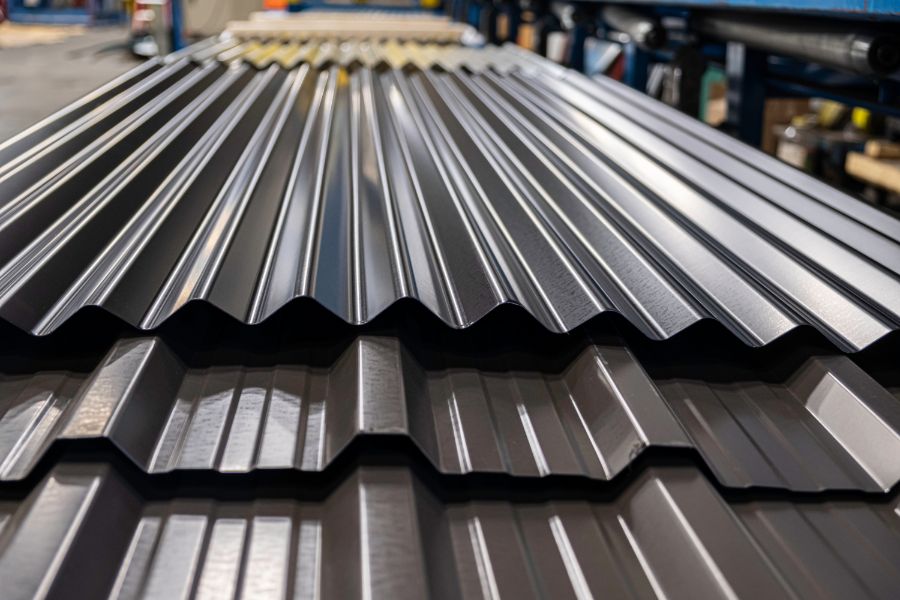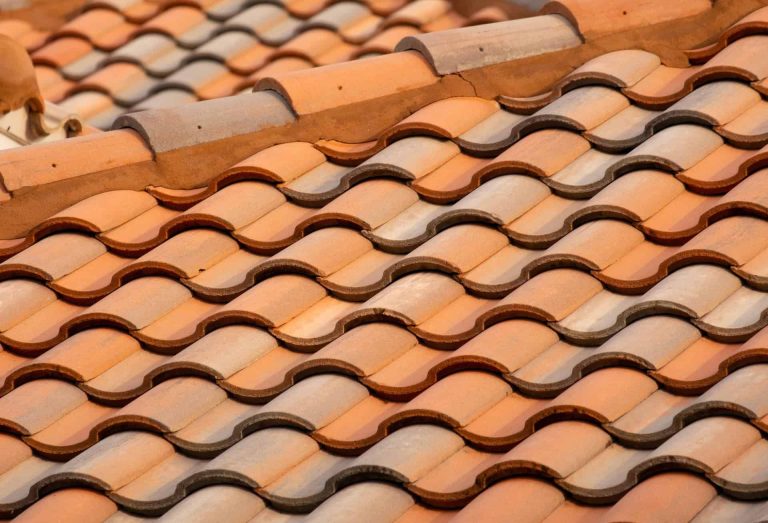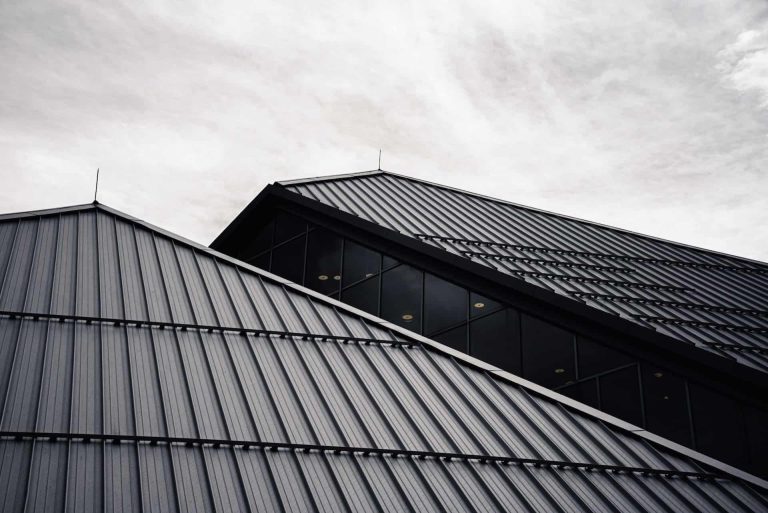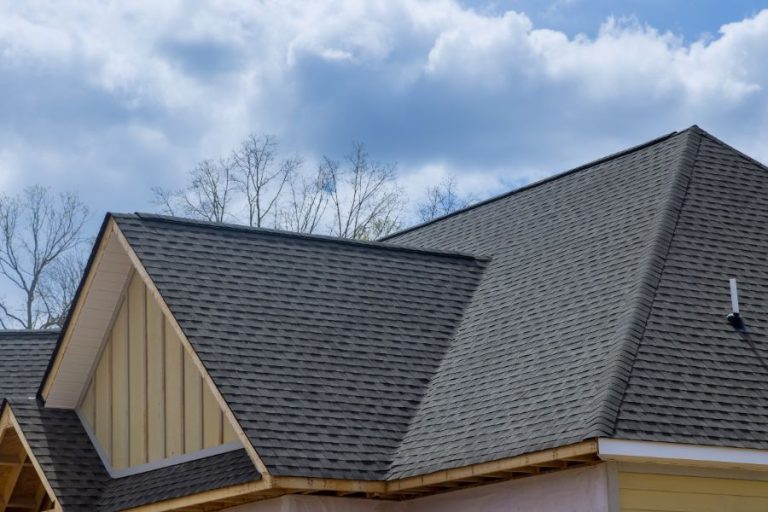Our Comprehensive Guide to Choosing the Right Metal Roofing Material
Choosing the right metal roofing material involves balancing durability, aesthetic appeal, cost, and environmental conditions. Steel is widely available, economical, and robust but may require maintenance to prevent rust. Aluminum offers corrosion resistance and energy efficiency but can dent easily. Copper and zinc provide aesthetic appeal and long-lasting durability. Coatings protect all types of metal roofing from corrosion. Key selection factors include durability, geographic location, personal preference, and budget. Engaging with a reputable supplier guarantees the quality and safety of materials. Moving forward in the text will equip you with broader knowledge of modern metal roof designs and future trends.
Main Points
- Evaluate the durability and longevity of different metal roofing materials like steel, aluminum, copper, and zinc.
- Consider the climate suitability of the chosen material; for instance, aluminum is suitable for coastal areas.
- Analyze the architectural style of your home to ensure the metal roofing complements it.
- Take into account personal preferences and budget when selecting metal roofing materials.
- Purchase from reputable suppliers to ensure the quality, safety, and durability of the roofing material.
Understanding Metal Roofing Materials
When it comes to understanding metal roofing materials, it’s vital to examine the distinctive features and benefits of each type, which can range from the affordable and versatile steel to the corrosion-resistant aluminum and the premium options like copper and zinc.
Steel roofing, known for its affordability and versatility, offers a robust solution to withstand harsh weather conditions. This metal roofing material presents an economical yet durable choice for homeowners.
Aluminum roofing, on the other hand, provides excellent corrosion protection making it an ideal choice in coastal areas. Despite its lightweight and low maintenance requirements, it does have a downside—it can be susceptible to dents and scratches.
Copper and zinc roofing stand out for those seeking a luxurious aesthetic. These premium materials not only offer a refined appearance but also exceptional durability. However, their unique visual appeal comes at higher costs.
Regardless of the type, all metal roofing materials are treated with coatings for corrosion protection. Factors such as budget considerations, geographic location, building type suitability, and aesthetic preferences significantly shape the choice of metal roofing. Ultimately, a well-informed decision can ensure long-lasting protection and enhancement for your home.
Advantages of Steel Roofing
Turning our attention to steel roofing, its affordability and versatility make it a popular choice in residential, commercial, and agricultural applications. This material provides a cost-effective solution for those seeking a durable and visually appealing roofing option.
- Affordability: Steel roofing is a cost-effective solution compared to premium materials like copper and zinc. Its affordability extends beyond the initial cost, as it also saves on maintenance and replacement costs in the long run.
- Versatility: This material is available in a variety of styles, colors, and finishes, allowing for customization to complement any architectural style.
- Harsh Weather Conditions: Steel roofing is exceptionally strong, providing reliable protection against hail, wind, fire, and even seismic activities. Its resistance to these harsh weather conditions safeguards the safety and longevity of buildings.
- Maintenance: Though steel roofing requires regular maintenance to prevent corrosion, this is typically minimal compared to other roofing materials. Regular inspections and timely repairs maintain its durability and longevity.
Aluminum Roofing: An Overview
Exploring the world of aluminum roofing, it is important to note its high resistance to corrosion, sleek aesthetic appeal, and notable durability, making it a particularly suitable choice for coastal areas and older structures. This material withstands the harsh elements often experienced in coastal areas, offering homeowners peace of mind in the face of potential weather-related roofing issues.
Its sleek, modern appeal enhances the overall aesthetic of any structure, offering a range of colors and finishes for customization. This adds not only a visual appeal but also a sense of individuality to your property.
One of the significant advantages of aluminum roofing is its contribution to energy efficiency. The material reflects solar radiant heat, which can reduce cooling costs in hot climates, promoting sustainable living and long-term cost savings.
Despite being lightweight, aluminum roofing is incredibly durable, providing a long-lasting roofing solution with minimal maintenance requirements. This durability ensures safety and longevity for homeowners, making it a worthy investment.
Although aluminum roofing may cost more upfront compared to other alternatives, its resistance to rust, energy efficiency, modern appeal, and inherent durability make it an excellent choice for those prioritizing safety and longevity.
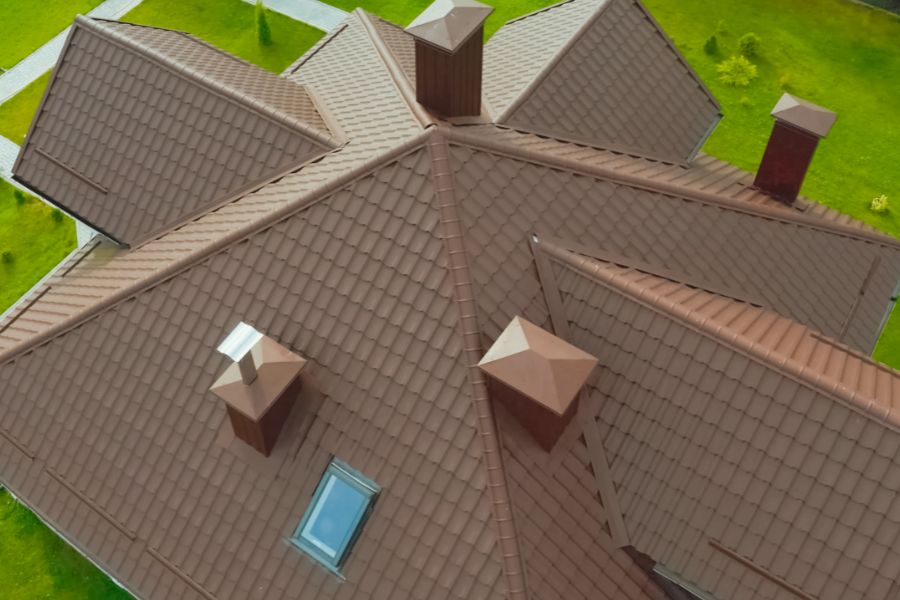
Copper and Zinc Roofing Features
Exploring the world of copper and zinc roofing, it becomes apparent that these materials offer a blend of aesthetic appeal and durability that is hard to match. Significantly, these roofing materials provide homeowners with a sense of safety due to their superior resilience and longevity.
- Copper roofing develops an alluring patina over time that not only enhances its visual appeal but also contributes to its durability. The patina acts as a protective shield, safeguarding the roof from the elements, thereby ensuring longevity.
- Zinc roofing, on the other hand, forms a protective layer of zinc hydroxyl carbonate. This layer imparts remarkable durability and resistance to the roof against corrosion.
- Both copper and zinc roofing materials are known for their exceptional longevity. With proper maintenance, these roofs can last for over a century, providing unwavering protection to your home.
- An additional feature of zinc roofing is its capacity for energy efficiency. It reflects light and heat, thereby reducing cooling costs during warmer months.
Thus, copper and zinc roofing options are worth considering due to their durability, longevity, and energy efficiency. Their unique features offer a sense of security and aesthetic appeal to any property.
Key Metal Roofing Selection Factors
While the essential characteristics of copper and zinc roofing make them strong contenders, the selection of the right metal roofing material extends beyond these options and should be guided by several key factors. Initially, consider the durability of the different materials. Steel and aluminum, for instance, might be suitable for properties exposed to harsh weather conditions owing to their high resistance.
Your geographic location is another vital factor. Certain metals perform better in specific climates and weather conditions, thereby increasing the longevity and performance of your roof. Aesthetically, the material you choose should align with your property’s architectural style and personal preferences, enhancing its overall appeal while ensuring functionality.
Another significant consideration is budget. Each metal roofing material comes at a different cost, with factors such as durability and maintenance needs influencing the price. Therefore, understanding your financial capacity is key when making your selection.
Lastly, always obtain your materials from reputable suppliers. This ensures you acquire quality products that are guaranteed to provide safety and resilience. Remember, a well-chosen metal roof is not just an aesthetic enhancement but a long-term investment in the safety and value of your property.
Assessing Metal Roofing Investment
When evaluating the investment in metal roofing, one must consider its remarkable lifespan, superior durability, and significant contribution to sustainability. Unlike traditional asphalt shingles that last about 15-30 years, metal roofing provides a lifespan of 40-70 years, almost double or triple the life expectancy. This longevity reduces the necessity for frequent replacements, making it a wise long-term investment.
- Durability: Metal roofing is built to withstand harsh weather conditions, including winds up to 140 miles per hour. Its fire-resistant properties provide an added layer of safety, potentially reducing insurance premiums.
- Low Maintenance: Metal roofs require minimal upkeep, reducing long-term maintenance costs.
- Environmental Benefits: Metal roofing materials are 100% recyclable at the end of their life, contributing to less construction waste and promoting sustainability.
- Energy Efficiency: Metal roofs reflect solar heat, reducing cooling costs in the summer and thereby contributing further to sustainability.
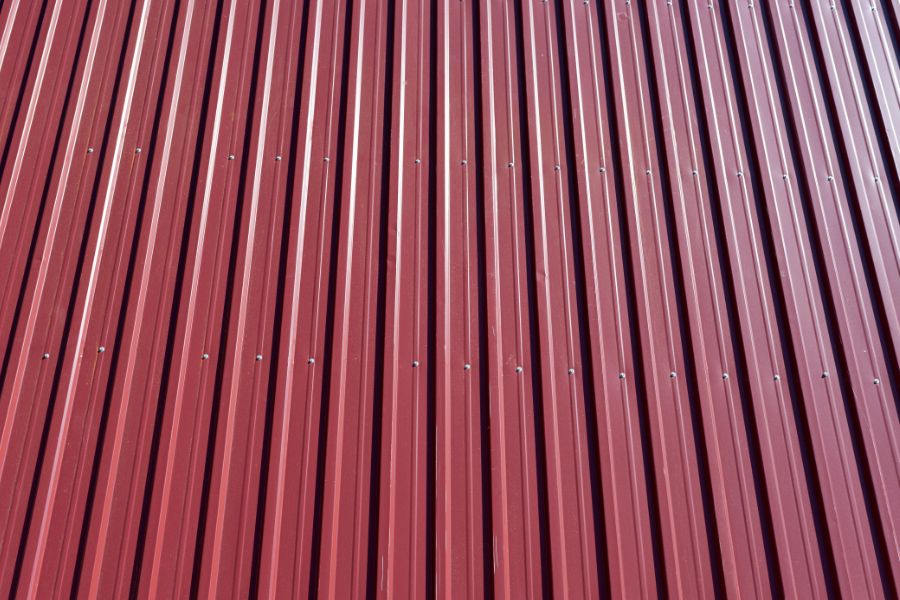
Modernizing Homes With Metal Panels
Frequently chosen for their sleek aesthetics and high durability, metal panels are revolutionizing modern home designs with their array of colors, finishes, and resistance to the elements. These panels offer a modern look that complements the architectural style of contemporary homes while also providing a long-lasting, durable solution that withstands the test of time.
Metal panels are more than just aesthetically pleasing; they are also renowned for their superior durability. Resistant to corrosion and lightweight, these panels are ideal for coastal areas where conditions are typically harsher. Their resistance to rust ensures longevity, providing homeowners with peace of mind knowing their investment is secure.
Furthermore, the energy efficiency of metal panels should not be overlooked. These panels reflect solar radiant heat, contributing to reduced cooling costs in hot climates and adding another layer of value to their installation.
Future Trends in Metal Roofing
Looking ahead, the metal roofing industry is poised to witness significant progress, with trends pointing towards the integration of smart roofing systems, the development of lightweight and high-strength materials, and the growing popularity of modular and prefabricated solutions.
These developments not only promise improved performance but also aim to enhance the safety aspects of roofing systems. Here are some of the future trends in metal roofing:
- Smart roofing systems: Leveraging IoT technology and sensors, these systems offer real-time data and predictive analytics for peak performance and maintenance.
- Lightweight materials: Material science progressions are leading to the development of lightweight yet robust materials. These materials promise enhanced durability, making them a safer choice for homeowners.
- Modular solutions: These innovative technologies are designed for quick and efficient installation, reducing the risks associated with prolonged construction periods.
- Material science progressions: Researchers are pushing the boundaries of what’s possible in metal roofing, expanding its versatility for various architectural designs.


